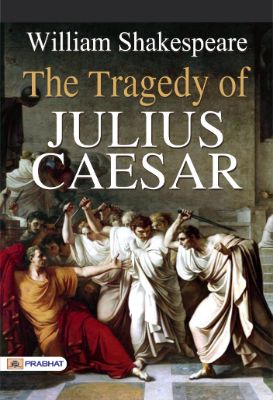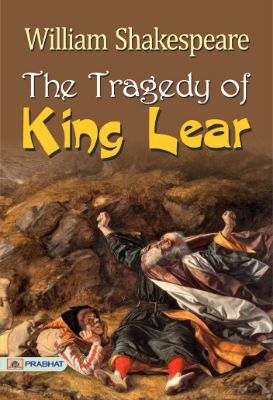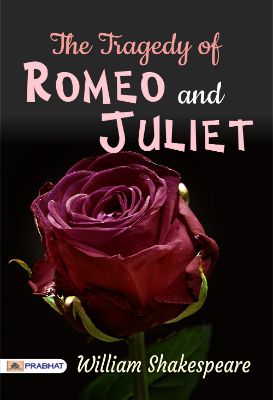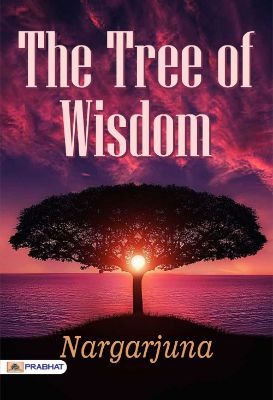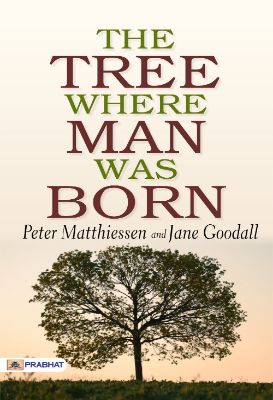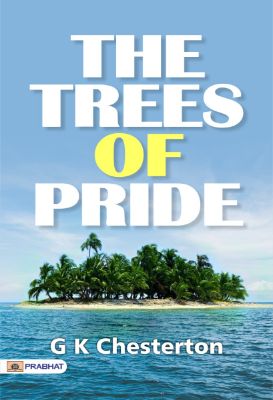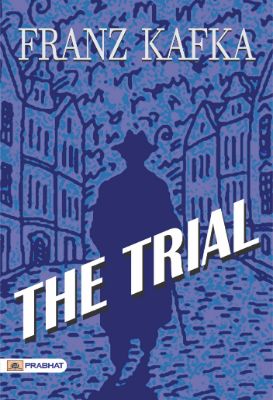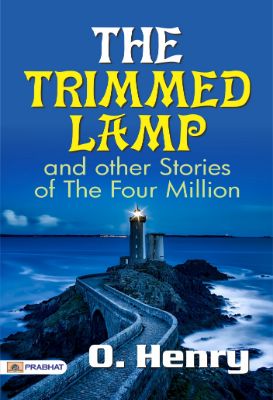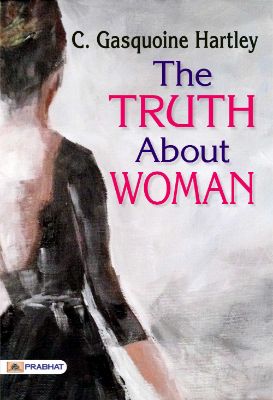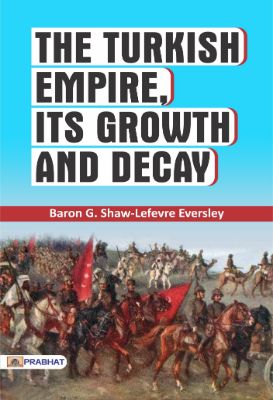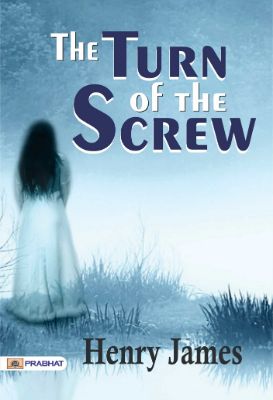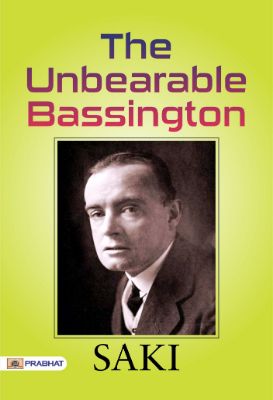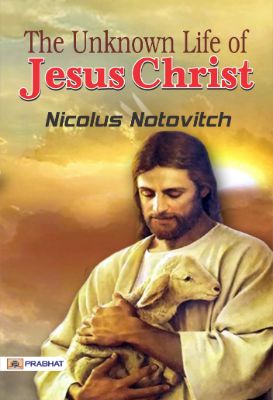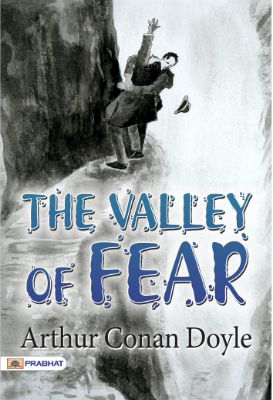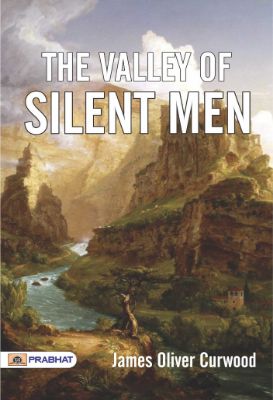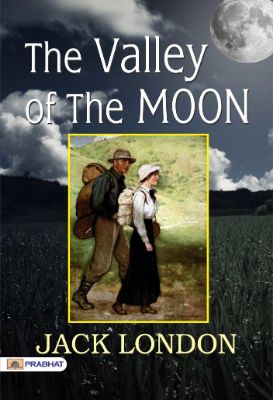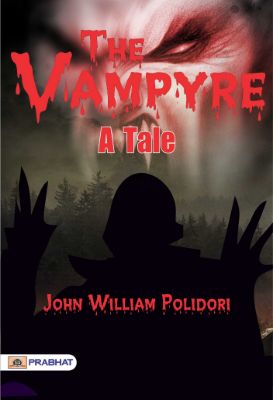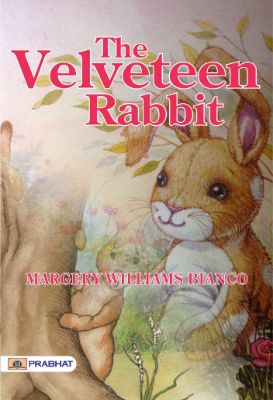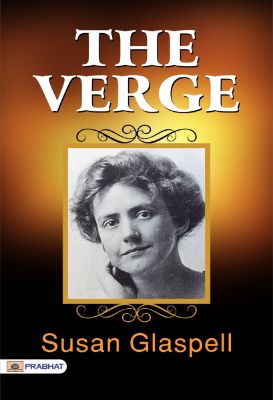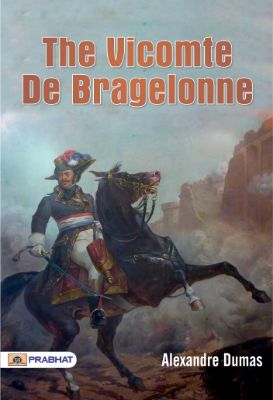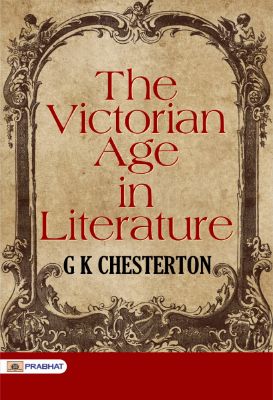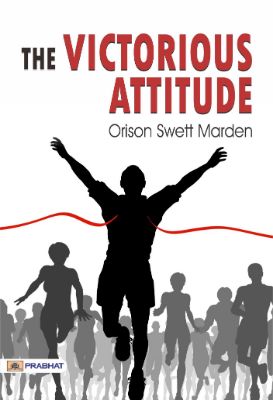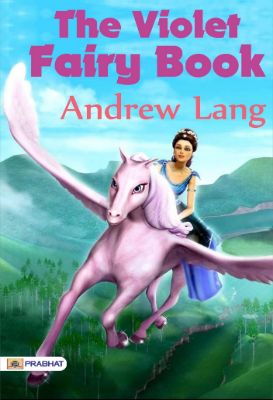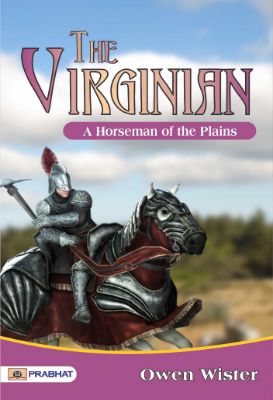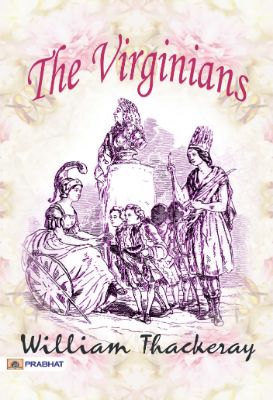Premium Books
Showing 3351–3400 of 3787 results
The Tragedie of Julius Caesar by William Shakespeare
The Tragedy of Julius Caesar is a tragedy by William Shakespeare, believed to have been written in 1599.
The Tragedie of Macbeth by William Shakespeare
Macbeth is a tragedy by William Shakespeare; it is thought to have been first performed in 1606. It dramatises the damaging physical and psychological effects of political ambition on those who seek power for its own sake.
The Tragedy of Hamlet, Prince of Denmark by William Shakespeare
The Tragedy of Hamlet, Prince of Denmark is a play by William Shakespeare. Set in the Kingdom of Denmark, the play dramatizes the revenge Prince Hamlet exacts on his uncle Claudius for murdering King Hamlet, Claudius’s brother and Prince Hamlet’s father, and then succeeding to the throne and taking as his wife Gertrude, the old king’s widow and Prince Hamlet’s mother. The play vividly portrays both true and feigned madness – from overwhelming grief to seething rage and explores themes of treachery, revenge, and moral corruption. William Shakespeare (circa 1564 – 23 April 1616) was an English poet and playwright, widely regarded as the greatest writer in the English language and the world’s pre-eminent dramatist. He is often called England’s national poet and the “Bard of Avon.” His surviving works, including some collaborations, consist of about 38 plays, 154 sonnets, two long narrative poems, and several other poems. His plays have been translated into every major living language and are performed more often than those of any other playwright.
The Tragedy of King Lear by William Shakespeare
Kent. I thought the King had more affected the Duke of Albany than Cornwall.
The Tragedy of Othello, Moor of Venice by William Shakespeare
Othello is a tragedy by William Shakespeare, believed to have been written in 1603. It is based on the story Un Capitano Moro by Cinthio, a disciple of Boccaccio, first published in 1565.
The Tragedy of Pudd’nhead Wilson by Mark Twain
First published in the year 1894, noted American writer Mark Twain’s novel ‘The Tragedy of Pudd’nhead Wilson’ is set in the fictional Missouri frontier town of Dawson’s Landing on the banks of the Mississippi River in the first half of the 19th century.
The Tragedy of Romeo and Juliet by William Shakespeare
Chor. Two households, both alike in dignity,
In fair Verona, where we lay our scene,
From ancient grudge break to new mutiny,
Where civil blood makes civil hands unclean.
From forth the fatal loins of these two foes
A pair of star-cross’d lovers take their life;
Whose misadventur’d piteous overthrows
Doth with their death bury their parents’ strife.
The fearful passage of their death-mark’d love,
And the continuance of their parents’ rage,
Which, but their children’s end, naught could remove,
Is now the two hours’ traffic of our stage;
The which if you with patient ears attend,
What here shall miss, our toil shall strive to mend.
The Tragical History of Doctor Faustus by Christopher Marlowe
The Tragical History of Doctor Faustus’ is an Elizabethan tragedy by Christopher Marlowe, based on German stories about the title character Faust. It was first performed sometime between 1588 and Marlowe’s death in 1593. The powerful effect of early productions of the play is indicated by the legends that quickly accrued around them—that actual devils once appeared on the stage during a performance, “to the great amazement of both the actors and spectators”, a sight that was said to have driven some spectators mad.
The Trail of the Hawk: A Comedy of the Seriousness of Life by Sinclair Lewis
The present book ‘The Trail of the Hawk: A Comedy of the Seriousness of Life’ is a fictional novel which follows the life of Carl Ericson as he grows up and matures. This novel was written by American novelist, short-story writer, and playwright Sinclair Lewis. It was first published in the year 1915.
The Trained Memory by Warren Hilton
The present book titled ‘The Trained Memory’ was written by a renowned psychologist and the founder of the Society of Applied Psychology – Warren Hilton. It was first published in the year 1914.
The Tree of Wisdom by Nargarjuna
The She-rab Dong-bu is an ethical treatise written by Nargarjuna. Although he is celebrated as one of the most subtle thinkers that Buddhism, and indeed the world, has ever produced, this work is fairly simple and intended for a broad audience. Particularly striking is the nearly rabid misogyny, a feature fully in keeping with the time and place of composition, but one that we might wish not to see in the writing of the grand formulator of the Madhyamika School of philosophy.
The Tree Where Man Was Born by Peter Matthiessen and Jane Goodall
For encouraging the making of this book I am particularly grateful to Dr. John S. Owen, director of the Tanzania National Park, whose vision and dedication in a crucial time helped to save African wildlife for the future.
I thank Martha Gellhorn and Truman Capote for recommending me so generously to Dr. Owen, and also William Shawn of The New Yorker magazine for the unfailing support that has made my travels possible for years.
The Trees of Pride by G K Chesterton
Gilbert Keith Chesterton was an English writer, philosopher, lay theologian, and literary and art critic.
The Trial by Franz Kafka
Someone must have been telling lies about Josef K., he knew he had done nothing wrong but, one morning, he was arrested. Every day at eight in the morning he was brought his breakfast by Mrs. Grubach’s cook – Mrs. Grubach was his landlady – but today she didn’t come. That had never happened before. K. waited a little while, looked from his pillow at the old woman who lived opposite and who was watching him with an inquisitiveness quite unusual for her, and finally, both hungry and disconcerted, rang the bell. There was immediately a knock at the door and a man entered. He had never seen the man in this house before. He was slim but firmly built, his clothes were black and close-fitting, with many folds and pockets, buckles and buttons and a belt, all of which gave the impression of being very practical but without making it very clear what they were actually for. “Who are you?” asked K., sitting half upright in his bed.
The Trimmed Lamp, and other Stories of the Four Million by O. Henry
Of course there are two sides to the question. Let us look at the other. We often hear “shop-girls” spoken of. No such persons exist. There are girls who work in shops. They make their living that way. But why turn their occupation into an adjective? Let us be fair. We do not refer to the girls who live on Fifth Avenue as “marriage-girls.”
The Triple Alliance, Its Trials and Triumphs by Harold Avery
“What’s your name?”
“Diggory Trevanock.”
The whole class exploded.
“Now, then,” said Mr. Blake, looking up from his mark-book with a broad grin on his own face—”now, then, there’s nothing to laugh at.—Look here,” he added, turning to the new boy, “how d’you spell it?”
Instead of being at all annoyed or disconcerted at the mirth of his class-mates, the youngster seemed rather to enjoy the joke, and immediately rattled out a semi-humorous reply to the master’s question,—
“D I G, dig; G O R Y, gory—Diggory: T R E, tre; VAN, van; O C K, ock—Trevanock.” Then turning round, he smiled complacently at the occupants of the desks behind, as much as to say: “There, I’ve done all I can to amuse you, and I hope you’re satisfied.”
The Trojan Women of Euripides by Euripides
Judged by common standards, the Troädes is far from a perfect play; it is scarcely even a good play. It is an intense study of one great situation, with little plot, little construction, little or no relief or variety. The only movement of the drama is a gradual extinguishing of all the familiar lights of human life, with, perhaps, at the end, a suggestion that in the utterness of night, when all fears of a possible worse thing are passed, there is in some sense peace and even glory. But the situation itself has at least this dramatic value, that it is different from what it seems.
The Troll Garden, and Selected Stories by Willa Cather
Near Rattlesnake Creek, on the side of a little draw stood Canute’s shanty. North, east, south, stretched the level Nebraska plain of long rust-red grass that undulated constantly in the wind. To the west the ground was broken and rough, and a narrow strip of timber wound along the turbid, muddy little stream that had scarcely ambition enough to crawl over its black bottom. If it had not been for the few stunted cottonwoods and elms that grew along its banks, Canute would have shot himself years ago. The Norwegians are a timber-loving people, and if there is even a turtle pond with a few plum bushes around it they seem irresistibly drawn toward it.
The Truth About Woman by C. Gasquoine Hartley
It is very difficult to write a preface to a work which is expressly intended as a revelation of the faith of the writer.
The Turkish Empire, Its Growth and Decay by Baron G. Shaw-Lefevre Eversley
The present book ‘The Turkish Empire, Its Growth and Decay’ by Baron G. Shaw-Lefevre Eversley gives a historial account of the Turkish empire’s reign, its growth and development, and its eventual decay. This book was first published in the year 1917.
The Turn of the Screw by Henry James
The Turn of the Screw’, first published in 1898, is a novella written by Henry James, who was considered a master of creating best psychological fiction. It is a gothic novel, work of great horror, by one of the most acclaimed authors of the modern European literature.
The Two Admirals by James Fenimore Cooper
It is a strong proof of the diffusive tendency of every thing in this country, that America never yet collected a fleet. Nothing is wanting to this display of power but the will. But a fleet requires only one commander, and a feeling is fast spreading in the country that we ought to be all commanders; unless the spirit of unconstitutional innovation, and usurpation, that is now so prevalent, at Washington, be controlled, we may expect to hear of proposals to send a committee of Congress to sea, in command of a squadron. We sincerely hope that their first experiment may be made on the coast of Africa.
THE UNBEARABLE BASSINGTON by Saki
Francesca Bassington sat in the drawing-room of her house in Blue Street, W., regaling herself and her estimable brother Henry with China tea and small cress sandwiches. The meal was of that elegant proportion which, while ministering sympathetically to the desires of the moment, is happily reminiscent of a satisfactory luncheon and blessedly expectant of an elaborate dinner to come.
In her younger days Francesca had been known as the beautiful Miss Greech; at forty, although much of the original beauty remained, she was just dear Francesca Bassington. No one would have dreamed of calling her sweet, but a good many people who scarcely knew her were punctilious about putting in the “dear.”
The Uncanny by Sigmund Freud , David McLintock, et al.
It is only rarely that a psycho-analyst feels impelled to investigate the subject of aesthetics, even when aesthetics is understood to mean not merely the theory of beauty but the theory of the qualities of feeling. He works in other strata of mental life and has little to do with the subdued emotional impulses which, inhibited in their aims and dependent on a host of concurrent factors, usually furnish the material for the study of aesthetics. But it does occasionally happen that he has to interest himself in some particular province of that subject; and this province usually proves to be a rather remote one, and one which has been neglected in the specialist literature of aesthetics.
The Unfolding Life by Antoinette Abernethy Lamoreaux
The greatest thing in the world is a human life. The greatest work in the world is the helpful touch upon that life. Here and there an artist in soul culture is found at the task, but the many are unskilled and the product of the labor is far from a manhood “perfect in Christ.”
In dealing with things, the vessel marred in the making can be set aside or fashioned anew, but a life is for eternity. The faulty work can not be undone. The mistake can never be wholly rectified, for life never yields up what is given it. The look, the word, the invisible atmosphere of the home and church, the sights and sounds of all the busy days enter the super-sensitive and retentive soul of the child and are woven into life tissue. Character has no other from which to fashion itself. Therefore its final beauty and worth will be determined in large measure by the quality of the material which entered in.
The Unknown Life of Jesus Christ by Nicolas Notovitch
“…One day, while visiting a Buddhist convent on my route, I learned from a chief lama, that there existed in the archives of Lhassa, very ancient memoirs relating to the life of Jesus Christ and the occidental nations, and that certain great monasteries possessed old copies and translations of those chronicles. As it was little probable that I should make another journey into this country, I resolved to put off my return to Europe until a later date, and, cost what it might, either find those copies in the great convents or go to Lhassa–a journey which is far from being so dangerous and difficult as is generally supposed, involving only such perils as I was already accustomed to, and which would not make me hesitate at attempting it…” – An excerpt from the book
The Unseen Hand by Elijah Kellogg
The Unseen Hand’ is a novel written in 1881 by American Congregationalist minister, lecturer and author of popular boy’s adventure books, Elijah Kellogg.
A vast majority of the noblest intellects of the race have ever held to the idea that,—“There’s a divinity that shapes our ends, Rough hew them how we will.” By its influence they have been both consoled and strengthened under the pressures and in the exigencies of life. This principle, to a singular degree, assumes both form and development in the story of James Renfew, the Redemptioner.
The Untempered Wind by Joanna E. Wood
t was early spring, the maples were but budding, the birds newly come and restless, the sky more gray than blue, and the air still sharp with a tang of frost. Jamestown’s streets, however, looked both bright and busy.
Groups of children went to school, hurrying out to the street, and looking this way and that for a companion. A mother came to a gate with a little girl, and pointing now to right, now to left, seemed to give her directions which way to go. The little girl started bravely. She wore a pink cap, and carried a new school-bag. “Hurry on!” a girl called to her, and she advanced uncertainly. A hesitating dignity born of the new school-bag forbade a decided run; her friend’s haste forbade her to linger. They met and passed on together.
An old man, with ophthalmia, feeling his way with a stick and muttering to himself with loose lips, went by. Two brothers crossed the street together, one swinging along easily, smoking a pipe, and carrying an axe over his shoulder; the other advancing with that spasmodic appearance of haste which seems the only gait to which crutches can be compelled.
The Untroubled Mind by Herbert J. Hall
The Untroubled Mind,Herbert J. Hall,Health & Wellness,prabhat books,low price books,prabhat books on kindle
The Upanishads: An Illustrated Classic of Indian Spirituality by Swami Paramananda
The Upanishads are a collection of texts that contain some of the central philosophical concepts of Hinduism, some of which are shared with Buddhism and Jainism. The Upanishads are considered by Hindus to contain utterances concerning the nature of ultimate reality and describing the character of and path to human salvation.
Paramananda was a swami and one of the early Indian teachers who went to the United States to spread the Vedanta philosophy and religion there. He was a mystic, a poet and an innovator in spiritual community living.
The Valley of Fear by Arthur Conan Doyle
The Valley of Fear’ is the fourth and final Sherlock Holmes novel by Sir Arthur Conan Doyle. It is loosely based on the characters Molly Maguires and Pinkerton agent James McParland.
The Valley of Silent Men by James Oliver Curwood
The present novel ‘The Valley of Silent Men’ by the famous American action-adventure writer and conservationist James Oliver Curwood was first published in the year 1920.
The Valley of the Moon by Jack London
The present children’s novel ‘The Valley of the Moon’ by Jack London was first published in the year 1913. The valley where it is set is located north of the San Francisco Bay Area in Sonoma County, California where Jack London was a resident; he built his ranch in Glen Ellen.
The Vampyre a Tale by John William Polidori
First published in the year 1819, famous English suspense and thriller writer John William Polidori’s book ‘The Vampyre a Tale’ is often viewed as the progenitor of the romantic vampire genre of fantasy fiction.
The Variable Man by Philip K. Dick
Philip K. Dick’s ‘The Variable Man’ is a short science fiction story. This story was first published in the year 1952 in a magazine named the Planet Stories.
The Varieties of Religious Experience: A Study in Human Nature by William James
My thanks for help in writing these lectures are due to Edwin D. Starbuck, of Stanford University, who made over to me his large collection of manuscript material; to Henry W. Rankin, of East Northfield, a friend unseen but proved, to whom I owe precious information; to Theodore Flournoy, of Geneva, to Canning Schiller, of Oxford, and to my colleague Benjamin Rand, for documents; to my colleague Dickinson S. Miller, and to my friends, Thomas Wren Ward, of New York, and Wincenty Lutoslawski, late of Cracow, for important suggestions and advice. Finally, to conversations with the lamented Thomas Davidson and to the use of his books, at Glenmore, above Keene Valley, I owe more obligations than I can well express.
The Velveteen Rabbit by Margery Williams Bianco
First published in the year 1922, famous English writer Margery Williams Bianco’s book ‘The Velveteen Rabbit’ is a fully illustrated children’s book which chronicles the story of a stuffed rabbit and his desire to become real, through the love of his owner.
The Verge by Susan Glaspell
One of Susan Glaspell’s most popular plays, and one of the first works of American expressionist theatrical art.
The Vermilion Pencil by Homer Lea
First published in the year 1908, the present book ‘The Vermilion Pencil’ by American adventurer, author and geopolitical strategist Homer Lea is a fictional romance written in four parts.
The Vicomte De Bragelonne by Alexandre Dumas
First published in the year 1850, the present book titled ‘The Vicomte De Bragelonne’ was written by the renowned French historical fiction writer Alexandre Dumas. The principal heroes of the novel are the musketeers. The novel’s length finds it frequently broken into smaller parts. The narrative is set between 1660 and 1673 against the background of the transformation of Louis XIV from child monarch to Sun King.
The Victorian Age in Literature by G K Chesterton
Gilbert Keith Chesterton was an English writer, philosopher, lay theologian, and literary and art critic.
The Victorious Attitude by Orison Swett Marden
In The Victorious Attitude Marden explains that we need a good attitude to be successful in any endeavor. Controlling our mind and our thoughts is the key to success. We must remember that we all have to undergo challenges and obstacles on our path.
The Village Champion by William Osborn Stoddard
It was towards the end of a very hot summer, and all the human population of that crowded square of the great city had spent the first half of the night in the streets. Either that, or in leaning halfway out of their windows to get a breath of fresh air.
Now that sunrise was again so near at hand, however, and the breeze from the sea had done so much to make the world more comfortable to live in, the closely-built “hotels” and tenement houses were all asleep.
The former were mostly of the sort that sell lager beer and other things in the basement, and the latter were just the kind of places in which men and women ought not to live.
The Violet Fairy Book by Andrew Lang
A collection of several short fairy tales by the noted Scottish poet, novelist, literary critic, and anthropologist Andrew Lang. These tales are first English translations of fairy tales from many different languages. This volume was published in a colour-coded manner with violet at the background of each of the pages. He published around 25 such volumes with different colour codes for each. These volumes got immensely popular at that pont of time.
The Virginian: A Horseman of the Plains by Owen Wister
First published in the year 1902, famous American writer Owen Wister’s present fictional novel ‘The Virginian: A Horseman of the Plains’ describes the life of a cowboy on a cattle ranch in Wyoming. It is known as the first true western fiction ever written.
The Virginians by William Thackeray
First published in the year 1859, the present historical novel ‘The Virginians’ by William Thackeray tells the story of Henry Esmond’s twin grandsons, George and Henry Warrington. Henry’s romantic entanglements with an older woman lead up to his taking a commission in the British army and fighting under the command of General Wolfe at the capture of Quebec. On the outbreak of the American War of Independence he takes the revolutionary side. George, who is also a British officer, thereupon resigns his commission rather than take up arms against his brother. (courtesy: wikipedia)
The Visioning by Susan Glaspell
The Visioning, Susan Glaspell’s second novel, tells about Katie Jones, a young woman who lives in the comfortable world she knows with a charming circle of friends.
The Vital Message by Arthur Conan Doyle
In “The New Revelation” the first dawn of the coming change has been described. In “The Vital Message” the sun has risen higher, and one sees more clearly and broadly what our new relations with the Unseen may be. As I look into the future of the human race I am reminded of how once, from amid the bleak chaos of rock and snow at the head of an Alpine pass, I looked down upon the far stretching view of Lombardy, shimmering in the sunshine and extending in one splendid panorama of blue lakes and green rolling hills until it melted into the golden haze which draped the far horizon. Such a promised land is at our very feet which, when we attain it, will make our present civilisation seem barren and uncouth. Already our vanguard is well over the pass. Nothing can now prevent us from reaching that wonderful land which stretches so clearly before those eyes which are opened to see it.
The Vitality of ‘Mormonism’ An Address by James E. Talmage
This work has been selected by scholars as being culturally important, and is part of the knowledge base of civilization as we know it. Quality assurance was conducted on each of these books in an attempt to remove books with imperfections introduced by the digitization process. We believe this work is culturally important and have elected to bring the book back into print as part of our continuing commitment to the preservation of printed works worldwide. We appreciate your understanding of the imperfections in the preservation process, and hope you enjoy this valuable book.
The Voice of the City: Further Stories of the Four Million by O. Henry
Twenty-five years ago the school children used to chant their lessons. The manner of their delivery was a singsong recitative between the utterance of an Episcopal minister and the drone of a tired sawmill. I mean no disrespect. We must have lumber and sawdust.
I remember one beautiful and instructive little lyric that emanated from the physiology class. The most striking line of it was this:
“The shin-bone is the long-est bone in the hu-man bod-y.”


